Gifu-Kakamigahara Air and Space Museum
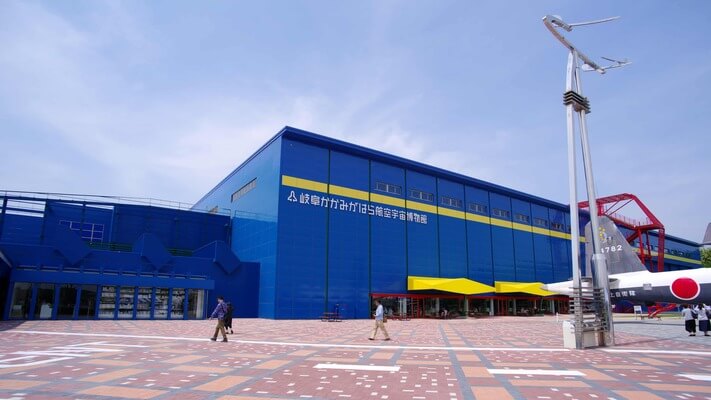
I went to Gifu-Kakamigahara-Air-and-Space-Museum in Gifu, Japan. It has few people and so quiet when I went to it an hour before closing and it rained.
About
This museum is about aviation and space, located in Gifu, Japan. There are many events held at this museum. You can make paper airplanes and even learn about space. There are over twenty airplanes and objects from space. It will promote international exchange and cooperation with NASA (US Aerospace Agency), ESA (European Space Agency), US Smithsonian National Air and Space Museum, Seattle Aviation Museum, French Le Bourget Aerospace Museum, Russian St. Petersburg History Museum, Russian Moscow Astronaut Memorial Museum and TSIOLKOVSKY Memorial Museum of Space and Flight History.
It opens 10am to 5 pm at weekday and 10 am to 6 pm at weekend and national holiday
It closes every Tuesday but sometimes opens so you should check the website when you go.
How to go
I introduce two ways from Tokyo station and Osaka station.
First, you go to Nagoya station from Tokyo station by shinkansen and then go to Gifu station and go to Kakamigahara station. Also you use train to bus from Kakamigahara station to this museum. You should take Kawashima line for 15 minutes by Kakamigahara fureai bus.
Second, you go to Nagoya station from Osaka station by shinkansen. Others are same with from Tokyo.
It has free parking if you go to this museum by car. It takes about six hours by car; and five hours by train from Tokyo. It takes three hours by car and train from Osaka.
Entrance Fee
| Entrance Fee | Adult | Over 60s and high school | Under junior high school |
| Individual | 800 yen ($7) | 500 yen ($4) | Free |
| Group(over 20 persons) | 700 yen ($6) | 400 yen ($3) | Free |
| annual pass | 2000 yen ($2) | 1300 yen ($11) | Free |
It’s cheaper if you buy ticket with other museum “Aichi museum of Flight”
The entrance fee is 1400 yen ($12) for adult, 1100 yen ($10) for over 60 years old, 1300 yen ($11) for university student and 1000 yen ($9) for high school student.
It sells annual pass. Adult is 2000 yen ($17) and over 60 years old and high school student is 1300 yen ($11). Also you can get a discount 5 % when you buy good at a souvenir shop and 100 yen discount when you buy orange juice or apple juice at the cafeteria.
Airplane
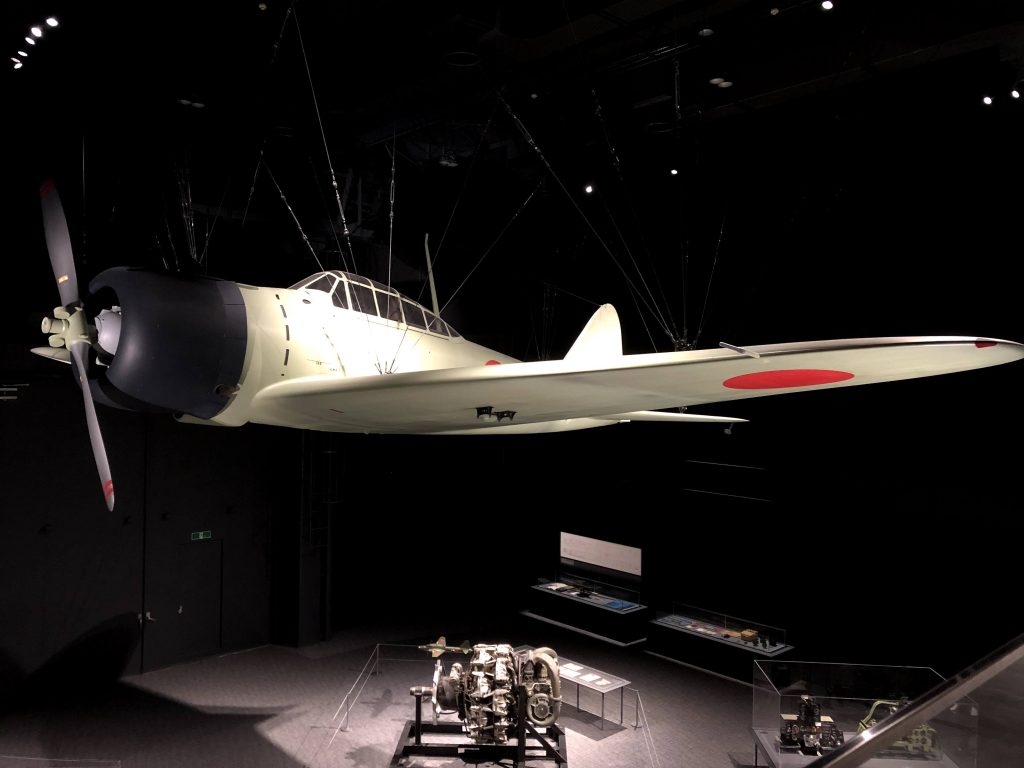
This is A6M1-zero. It was used during the world war. There were other aircrafts and engines which were used as well.

These airplanes were used after the world war. This is the Mitsubishi T-2. It was a supersonic jet trainer aircraft used by Japan Air Self-Defense Force. Introduced in 1975, it was the first Japanese-designed aircraft to break the sound barrier. It was the basis of the Mitsubishi F-1 military aircraft. All T-2s were retired by 2006.
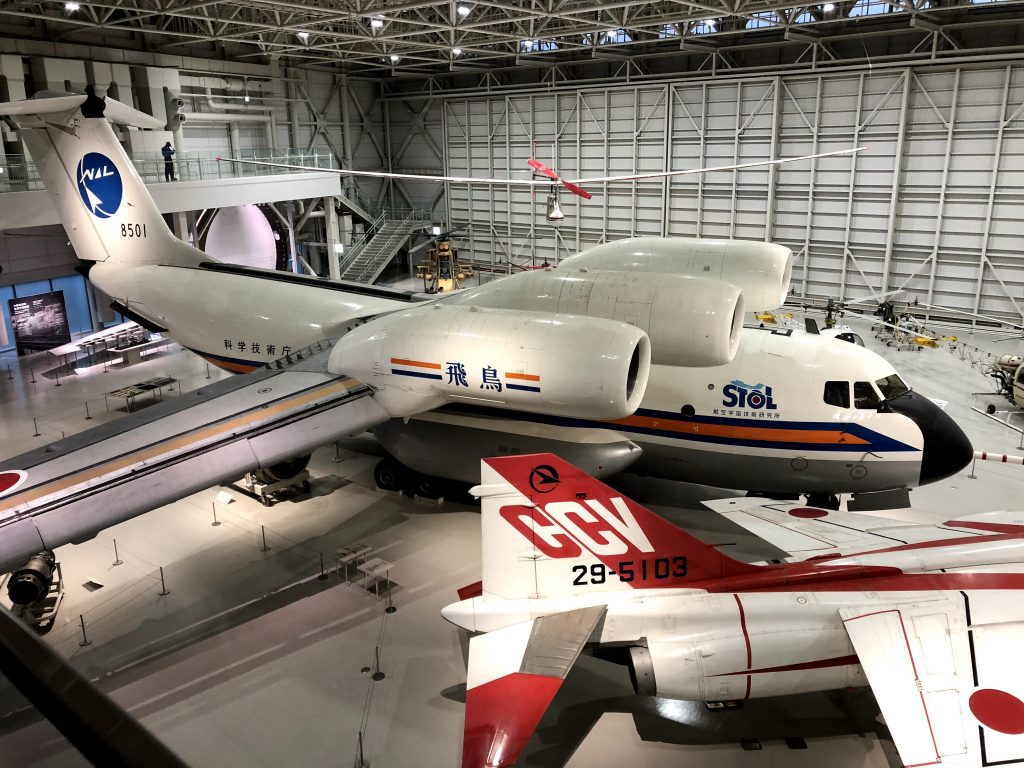
The Kawasaki C-1 is a twin-engine short-range military transport aircraft. It was developed and manufactured by Kawasaki Heavy Industries. The Kawasaki C-1 is a STOL (short take of and landing). It was used by Japan Air Self-Defense Force.
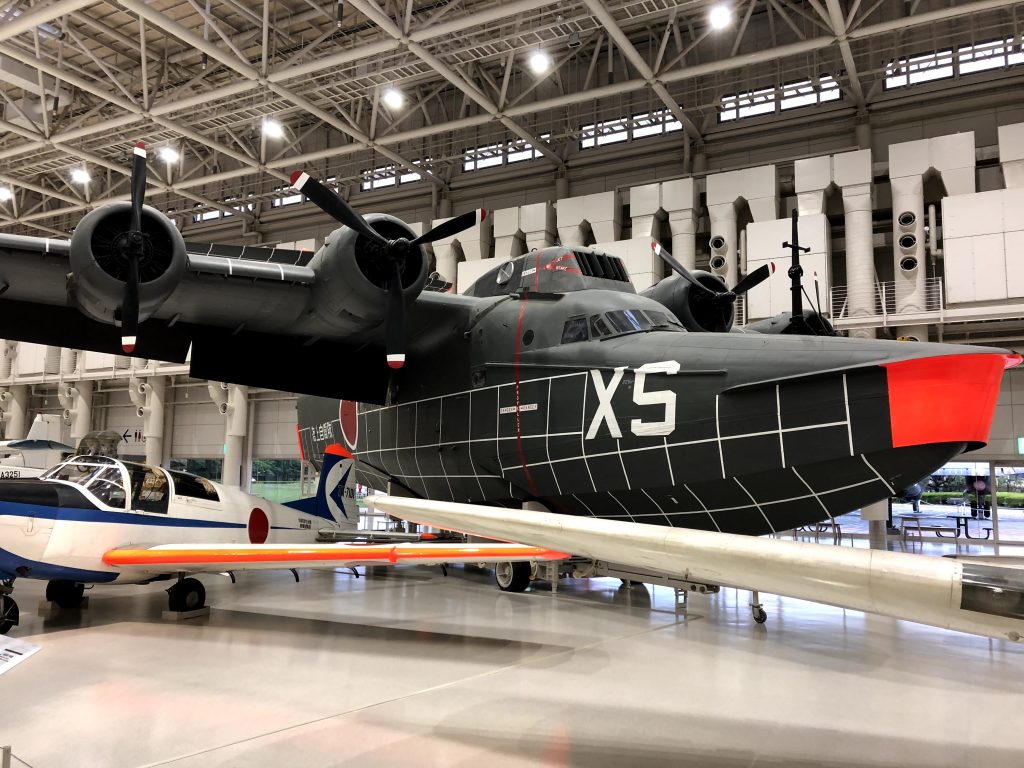
This is the Shin Meiwa UF-XS. It was made for an experiment to make an airplane that could land on rough waves. It was used by Japan Maritime Self-Defense Force.
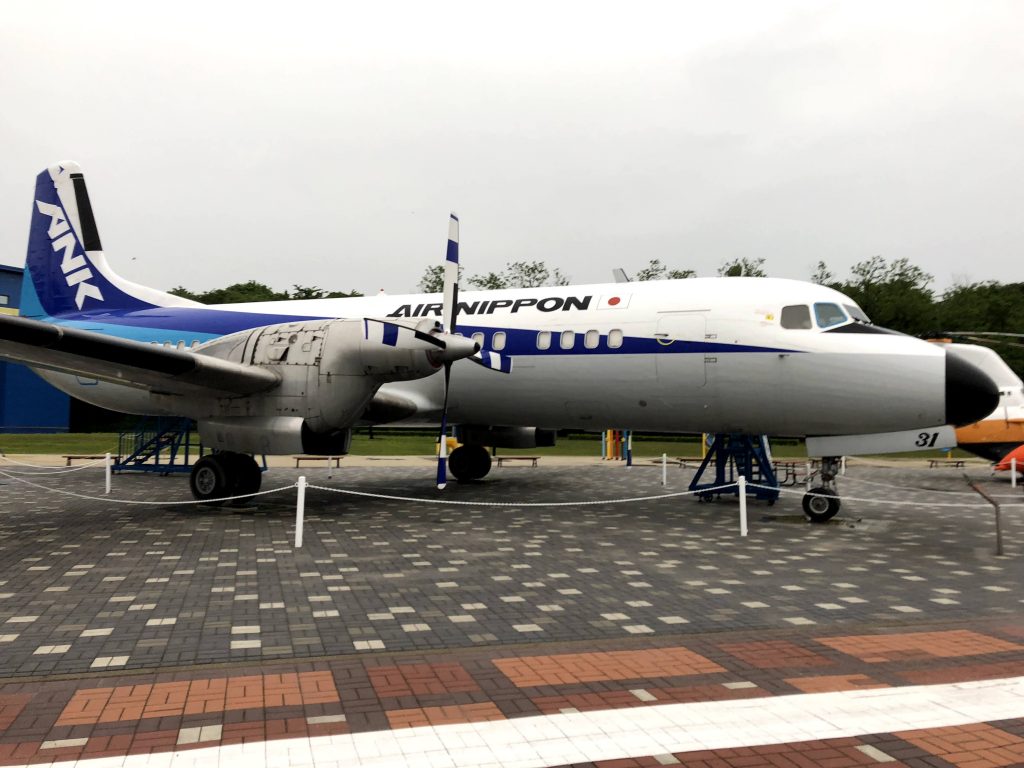
This is the YS-11. It is a twin-engine turboprop engine passenger aircraft made by Nihon Aircraft Manufacturing Corporation, and is the first passenger aircraft developed by a Japanese manufacturer after World War II.
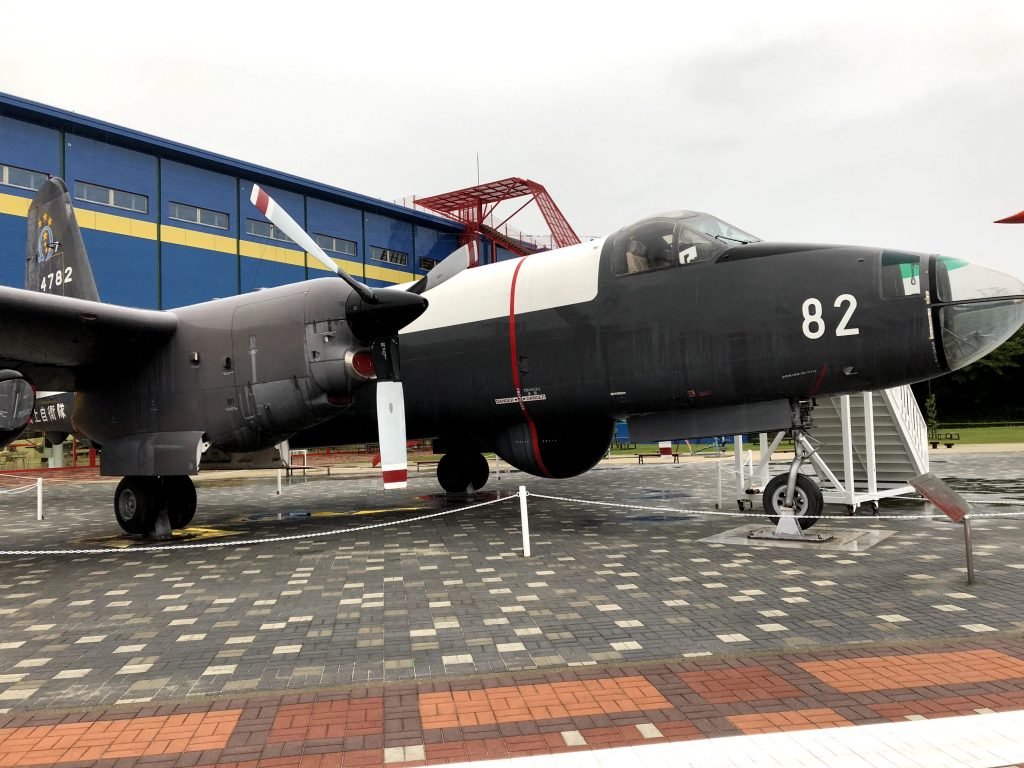
This is a P-2J. It was made by Kawasaki Heavy Industries. It was used Japan Maritime Self-Defense Force as Anti-submarine patrol aircraft.
There are other airplanes inside and outside of the museum like Kawasaki V107-A Helicopter, Shinmeiwa US-1A Rescue flying boat, T-2CCV and more.
Space
This museum contains several items from space, such as an engine, a spacesuit, and a robot. This robot could be used to see something from space.
Other
There’s a souvenir shop, a theater room, a kids’ room, a cafeteria, and a simulation game that controls an airplane.
This souvenir shop sells glass, pen and more also it sells Japan Air Self-Defense Force goods too.
This theater room will take some videos. First one will be screened for 18 minutes about a drama of people who have overcome failures and sacrifices such as “Apollo 13” and “Challenger Accident” and continued to challenge boldly at 11 am ,1 pm and 3 pm
Second one will be screened for 15 minutes about Light brothers at 11:30 am ,1:30 pm, 3:30 pm and 5pm(only weekend).
Third one will be screened for 18 minutes about Japan makes an effort to make something for space at noon, 2 pm and 4 pm.
Last one will be screened for 12 minutes about tokai engineers who support space development at 12:30 pm, 2:30 pm and 4:30 pm.
This cafeteria sells noodle curry, drinks and desert. It opens 10 am to 5pm at weekday and 10 am to 6 pm at weekend. You can enter for free if you use only this cafeteria and souvenir shop.
You’ll get voice guide and subtitle when you install “UDT Sorahaku” in English, Chinese, Korean, French and Japanese.
You can control Passenger plane and small jet simulator simulator operation experience from 10 am. Also you can control Helicopter too but it has elimination height is over 130m (4 feet 3 inch) from 1 pm to 1:40 and 3:30 pm to 4:10 per 8 persons.
Aichi museum of Flight is in Nagoya, Aichi. You can go both if you go to Nagoya since it’s not far from Gifu-Kakamigahara Air and Space Museum. This museum is about flight like a airplane and helicopter. Also it’s close Nagoya airport (it’s not Chubu Centrair International Airport). So you can see real airplane from this museum. A ticket fee is 1000 yen ($9) for adult, 800 yen ($7) for university student and high school student and 500 yen ($4) for secondary and elementary student. It opens 9:30 am to 5 pm and closes every Tuesday.
I was so fun jus for an hour but I wanted Passenger plane or small jet simulator simulator operation experience. So I’m going to go to this museum again for do this simulator game.
References
Gifu-Kakamigahara Air and Space Museum. (2017). http://www.sorahaku.net/
Kurogo Inc. https://flyteam.jp/aircraft/namc/ys-11
Nagoya Airport Terminal Building (2017)
 ahamo
ahamo 

